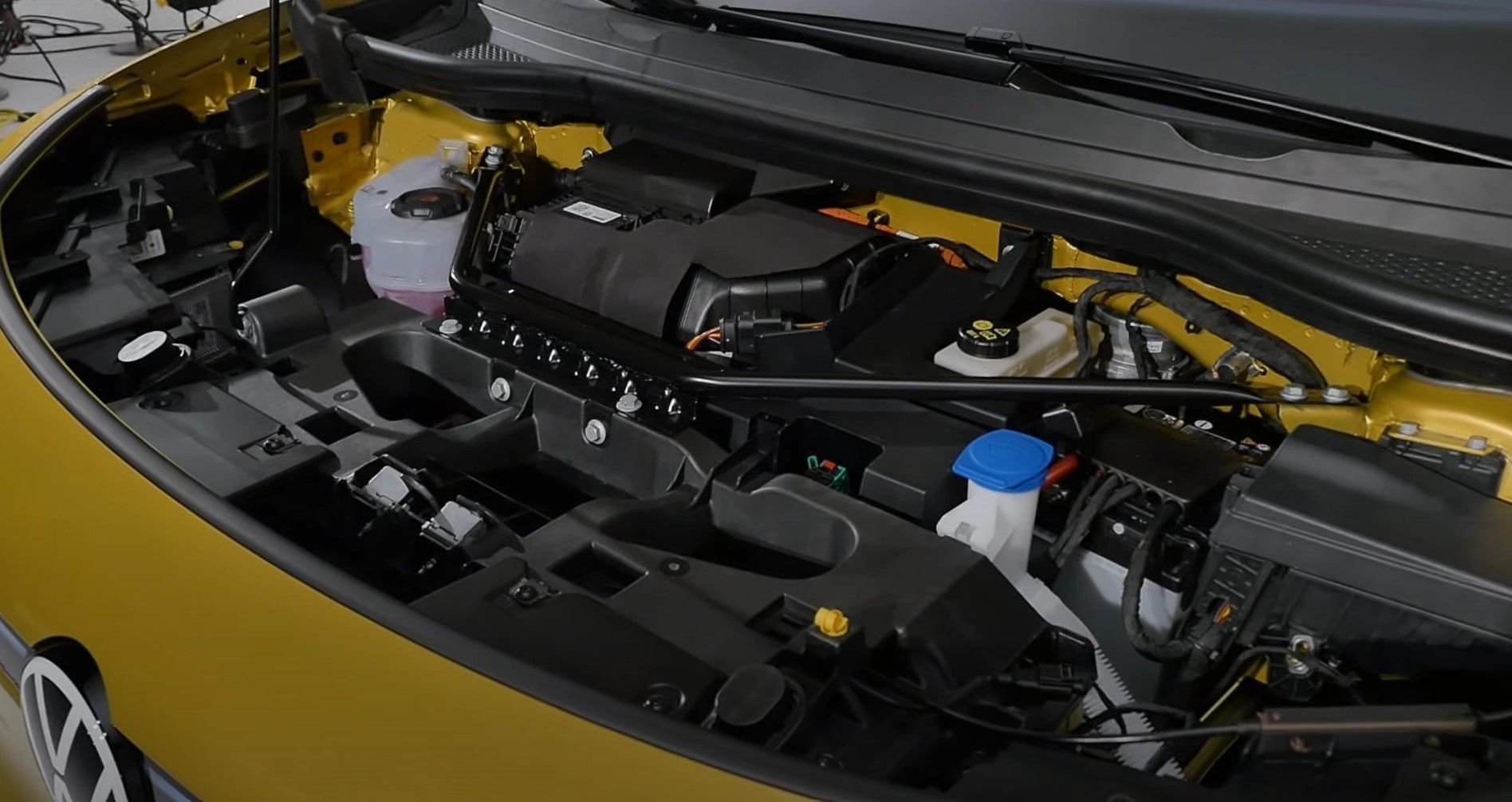2021 Volkswagen ID.4
#1
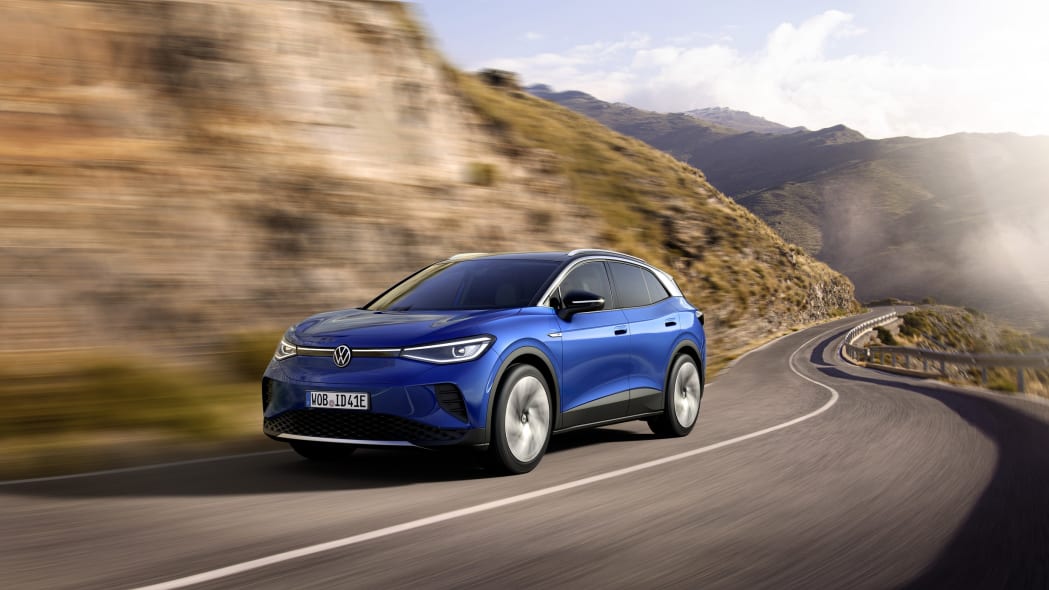

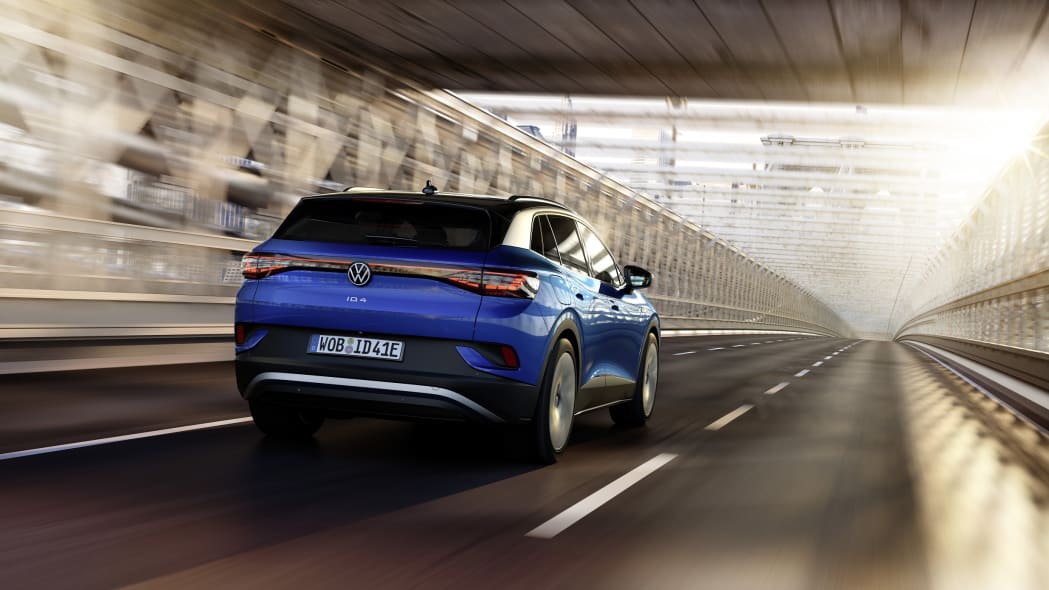
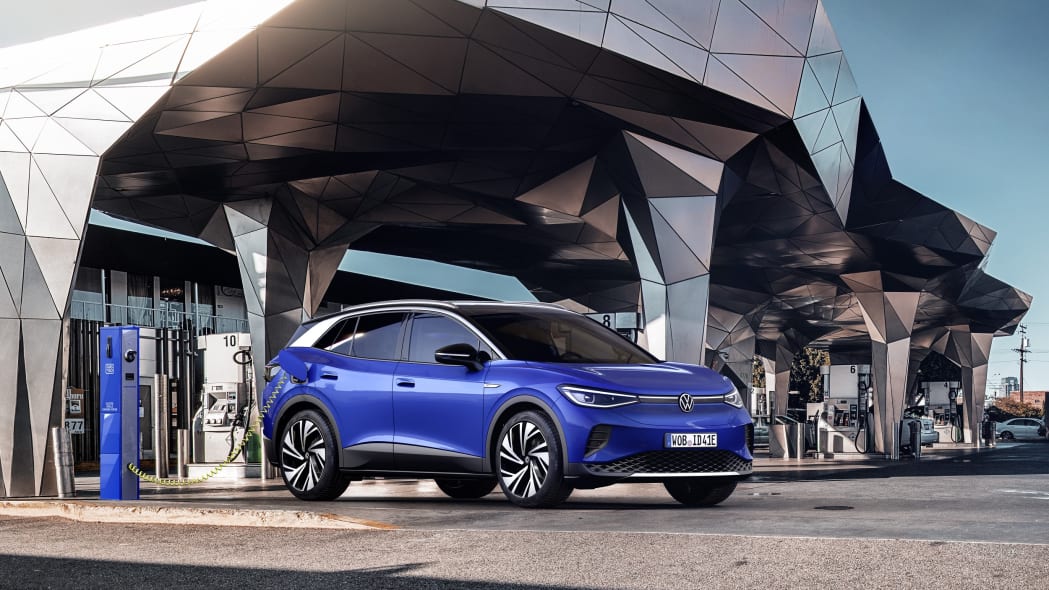
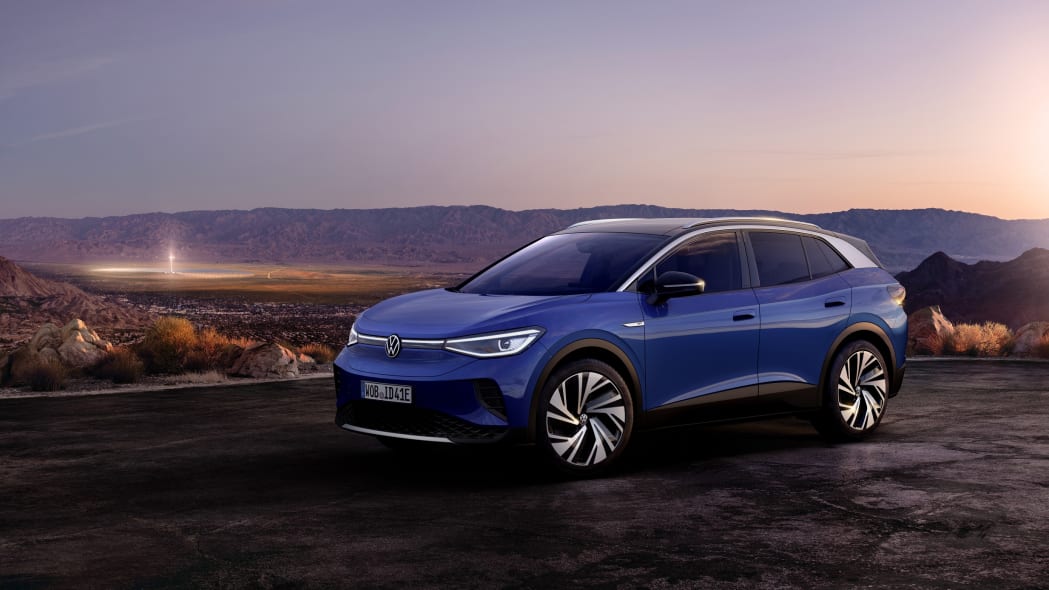
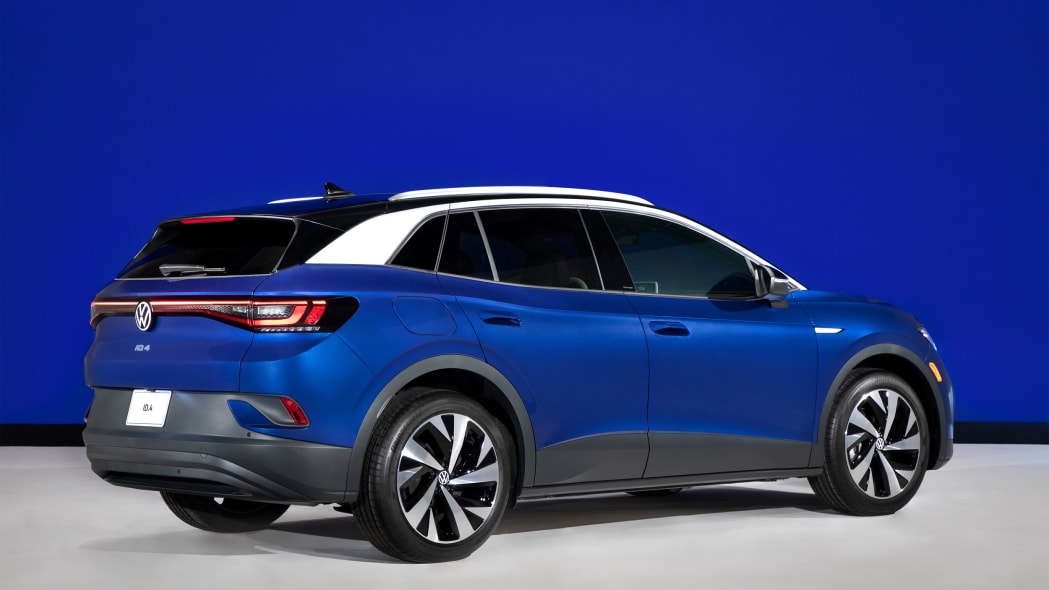

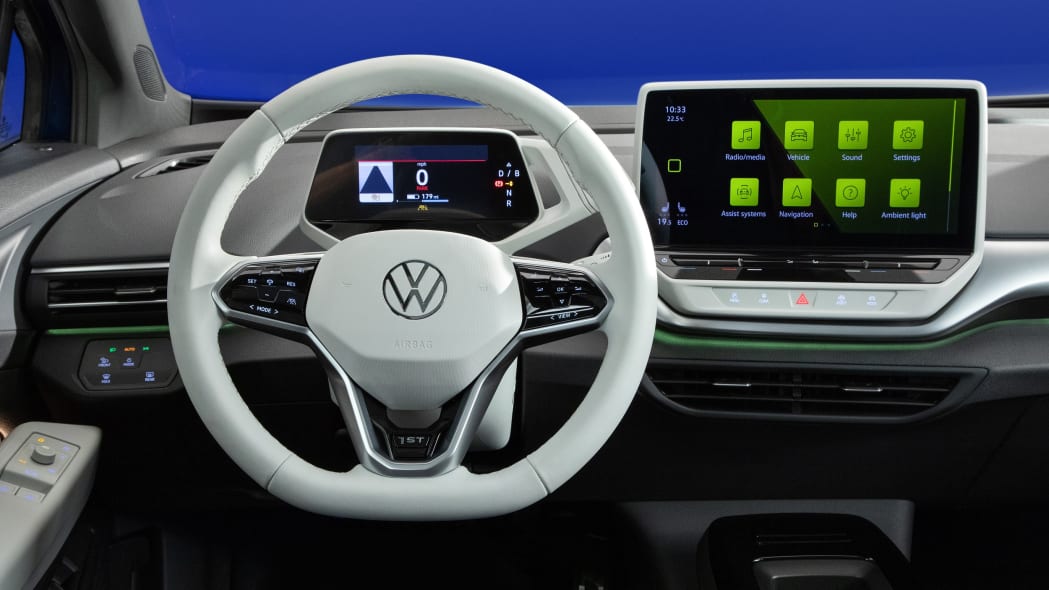
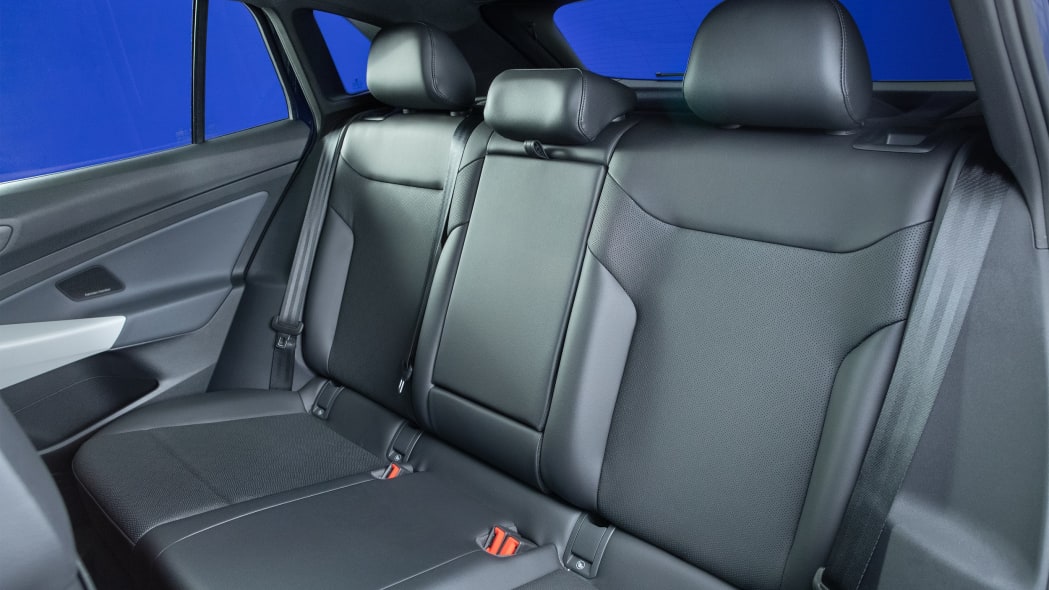
Volkswagen unveiled the ID.4, a compact crossover that spearheads its electric car offensive in the United States. Developed with battery power in mind from the get-go, this Tiguan-sized model is offered with rear- or all-wheel drive, and it was developed as an electric alternative to some of America's most popular cars.
The images released by the German carmaker over the past couple of months left little to the imagination, so the ID.4's design catches no one off-guard. It's characterized by a grille-less front end with numerous LED accents, a backlit Volkswagen emblem (which is optional), and a wide air dam at the bottom of the front bumper. Black trim above the rocker panels reduces the profile's visual mass, while the back end receives LED lights and a subtle ID.4 emblem. Several styling cues connect the ID.4 with the Golf-sized ID.3 hatchback sold in Europe.
Built on the modular MEB platform, the ID.4 stretches 180.5 inches from bumper to bumper, 64.4 inches high, and 72.9 inches wide, dimensions that make it 4.6 inches shorter, 1.9 inches lower, and 0.5 inches wider than the long-wheelbase Tiguan, and about five inches longer than the short-wheelbase model available in Europe and other global markets. Volkswagen hasn't published its weight yet. Trunk space checks in at 30.3 cubic feet with both rows of seats left up, and 64.2 cubes with the second row folded flat. For context, the two-row variant of America's Tiguan offers 37.6 and 73.5 cubes, respectively, while the three-row model posts 33 and 65.7.
An interesting aspect of the ID.4 is on the driver's door panel, where you'll find two window switches instead of four. Lowering the rear windows from the driver's seat requires pressing a button labeled "REAR" that's, you guessed it, touch-sensitive to link the switches to the motors in the back doors. Pressing it again sends power to the front windows. Reducing the number of buttons in the cabin achieves an uncluttered look while keeping costs in check. Overall, we concluded the ID.3's user interface is smartphone-like, so the ID.4's will be, too.
Dual-motor, through-the-road all-wheel drive will be available a few months after deliveries start. Volkswagen hasn't detailed this version yet, though it clarified adding a motor to the front axle will increase horsepower to 302. Both variants will come with three years of free charging on the growing Electrify America network.
Speaking of charging, Volkswagen said plugging the ID.4 into a DC fast charger channels about 33 miles of range per hour into the battery pack. Find one with a 125-kilowatt rating, and you'll be able to charge from a 5% battery level to 80% in 38 minutes. Alternatively, a full charge takes 7˝ hours using a home or a public Level 2 charger.
"It drives like a GTI, it has the packaging of a Tiguan, and the purpose of the Beetle. It's all the best things about Volkswagen in one package," said Scott Keogh, the head of the Volkswagen Group's American division.
At launch, VW will offer a 1st Edition model priced at $43,995 that gains both of the aforementioned packages, though it does not get the illuminated Volkswagen logo. It also features black mirror caps, 1st Edition exterior emblems, play and pause logos on the pedals, plus Electric White trim in the cabin. 1st Edition deliveries will start by the end of 2020, while the Pro trims will begin arriving in showrooms in 2021. Buyers who want to secure an early build slot can reserve the crossover by sending Volkswagen a refundable $100 deposit.
Volkswagen will build all variants of the ID.4 alongside the ID.3 in Zwickau, Germany, but it's investing $800 million in its factory in Chattanooga, Tennessee, to manufacture the model starting in 2022. It predicts the American-built model will carry a base price of approximately $35,000 before available incentives are factored in.
The images released by the German carmaker over the past couple of months left little to the imagination, so the ID.4's design catches no one off-guard. It's characterized by a grille-less front end with numerous LED accents, a backlit Volkswagen emblem (which is optional), and a wide air dam at the bottom of the front bumper. Black trim above the rocker panels reduces the profile's visual mass, while the back end receives LED lights and a subtle ID.4 emblem. Several styling cues connect the ID.4 with the Golf-sized ID.3 hatchback sold in Europe.
Built on the modular MEB platform, the ID.4 stretches 180.5 inches from bumper to bumper, 64.4 inches high, and 72.9 inches wide, dimensions that make it 4.6 inches shorter, 1.9 inches lower, and 0.5 inches wider than the long-wheelbase Tiguan, and about five inches longer than the short-wheelbase model available in Europe and other global markets. Volkswagen hasn't published its weight yet. Trunk space checks in at 30.3 cubic feet with both rows of seats left up, and 64.2 cubes with the second row folded flat. For context, the two-row variant of America's Tiguan offers 37.6 and 73.5 cubes, respectively, while the three-row model posts 33 and 65.7.
Look and touch
Minimalism was the interior design team's guiding light. The driver faces a horizontal digital instrument cluster whose display is about the size of a smartphone. The gear selector sticks out from the right side of the bezel, and a tablet-like touchscreen on the upper part of the dashboard displays the infotainment system. While we haven't spent time in the ID.4 yet, we drove the ID.3 and found the new software relatively intuitive to use. Touch-sensitive sliders positioned below the screen let the front passengers adjust the climate control settings.An interesting aspect of the ID.4 is on the driver's door panel, where you'll find two window switches instead of four. Lowering the rear windows from the driver's seat requires pressing a button labeled "REAR" that's, you guessed it, touch-sensitive to link the switches to the motors in the back doors. Pressing it again sends power to the front windows. Reducing the number of buttons in the cabin achieves an uncluttered look while keeping costs in check. Overall, we concluded the ID.3's user interface is smartphone-like, so the ID.4's will be, too.
Business in the back
In its most basic configuration, the ID.4 is equipped with an 82-kilowatt-hour lithium-ion battery pack and an electric motor mounted over the rear axle. It zaps the rear wheels with 201 horsepower and 228 pound-feet of torque, and Volkswagen estimates it will deliver up to 250 miles of driving range. Here's a fun bit of trivia: The ID.4 will be the first rear-engined, rear-wheel drive Volkswagen sold in America since the Vanagon retired in 1991.Dual-motor, through-the-road all-wheel drive will be available a few months after deliveries start. Volkswagen hasn't detailed this version yet, though it clarified adding a motor to the front axle will increase horsepower to 302. Both variants will come with three years of free charging on the growing Electrify America network.
Speaking of charging, Volkswagen said plugging the ID.4 into a DC fast charger channels about 33 miles of range per hour into the battery pack. Find one with a 125-kilowatt rating, and you'll be able to charge from a 5% battery level to 80% in 38 minutes. Alternatively, a full charge takes 7˝ hours using a home or a public Level 2 charger.
"It drives like a GTI, it has the packaging of a Tiguan, and the purpose of the Beetle. It's all the best things about Volkswagen in one package," said Scott Keogh, the head of the Volkswagen Group's American division.
The fine print
Available in all 50 states, the 2021 Volkswagen ID.4 carries a base price of $39,995, though many buyers will be eligible to claim local and federal incentives. That figure corresponds to a rear-wheel drive Pro model. The all-wheel drive version will arrive later in 2021 with a $43,695 base price, a heated windshield, a trailer hitch, and, of course, an additional electric motor. Buyers will have two option packages to choose from named Statement ($4,500) and Gradient ($1,500), respectively. The former adds an illuminated Volkswagen logo on the front end, thin strips of LEDs on either side of it, adaptive LED headlights, a fixed panoramic roof, 12-way power-adjustable front seats (six-way power seats are standard), and power-folding mirrors with puddle lights, among other features. The latter bundles 20-inch wheels, a black roof, silver roof rails, and silver exterior accents.At launch, VW will offer a 1st Edition model priced at $43,995 that gains both of the aforementioned packages, though it does not get the illuminated Volkswagen logo. It also features black mirror caps, 1st Edition exterior emblems, play and pause logos on the pedals, plus Electric White trim in the cabin. 1st Edition deliveries will start by the end of 2020, while the Pro trims will begin arriving in showrooms in 2021. Buyers who want to secure an early build slot can reserve the crossover by sending Volkswagen a refundable $100 deposit.
Volkswagen will build all variants of the ID.4 alongside the ID.3 in Zwickau, Germany, but it's investing $800 million in its factory in Chattanooga, Tennessee, to manufacture the model starting in 2022. It predicts the American-built model will carry a base price of approximately $35,000 before available incentives are factored in.
What's it up against?
The ID.4 will compete in the same growing segment as the Ford Mustang Mach-E, the Nissan Ariya, and the Tesla Model Y, among others. Significantly, Volkswagen stressed it's also an alternative to the gasoline-powered crossovers that rule the American market, like the Toyota RAV4, the Honda CR-V, and its own Tiguan.
#3
This looks like a potential winner. Not really a great gauge, but the pre-order/reservation website crashed there was so much traffic.
VW has come out swinging. At $40K on the initial 2WD/RWD trim, that's nearly the same MSRP on the outgoing e-golf SEL Premium. This is way bigger with more range and ultimately way more appeal.
2 packages and AWD would have it max out around $50K before fed/state incentives.
Between vehicles like this, the Nissan Ariya, and countless others coming, the EV wave is approaching. Will enough consumers be convinced to make the jump?
VW has come out swinging. At $40K on the initial 2WD/RWD trim, that's nearly the same MSRP on the outgoing e-golf SEL Premium. This is way bigger with more range and ultimately way more appeal.
2 packages and AWD would have it max out around $50K before fed/state incentives.
Between vehicles like this, the Nissan Ariya, and countless others coming, the EV wave is approaching. Will enough consumers be convinced to make the jump?
#6
The ID.4 is very important both to VW and to compeitors who should watch closely. Currently their is a gap between EVs like the Chevy Bolt and Hyundai Kona Electric, and more expensive choices like the Tesla Model X, Audi E-Tron and Jaguar I-Pace. The ID.4 should fit in nicely.
Trending Topics
#10
#11
Interior doesn't look cheap to me. Some things I don't like but overall a good package. No frunk though, hints that the tooling is still legacy. And the power/performance is not that great compared to Tesla.
#12
Looks pretty decent overall. Body has nice lines to it, and nothing is funky just because it's electric. And it didn't take long for the 2021 IS350's taillights to be repeated somewhere else (pure coincidence).
It is missing a center console though, which seems cheap for any modern vehicle. Also looks like another fat rear pillar, creating a blind spot.
I am quite sure this will sell very well if VW can keep the price where they promise.
It is missing a center console though, which seems cheap for any modern vehicle. Also looks like another fat rear pillar, creating a blind spot.
I am quite sure this will sell very well if VW can keep the price where they promise.
#13
250mi. Range from 82KWh seems low, hopefully they'll do better than that or have an option for more.
range and recharging options/speed are the number one concern for EV buyers i expect.
Other than that, this looks like a great offering, whenever it actually arrives. I'd take the pricing with a grain of salt since it likely won't be out in the u.s. for 2 years.
range and recharging options/speed are the number one concern for EV buyers i expect.
Other than that, this looks like a great offering, whenever it actually arrives. I'd take the pricing with a grain of salt since it likely won't be out in the u.s. for 2 years.
Last edited by bitkahuna; 09-24-20 at 08:37 AM.
#15




 Buttons are way overrated
Buttons are way overrated  Looks dated an old
Looks dated an old
